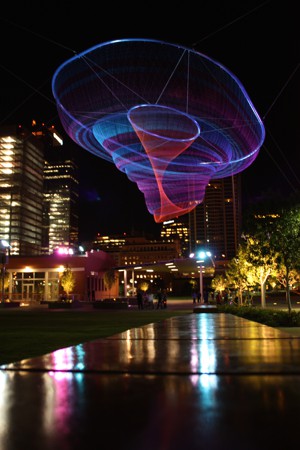| |
 Posted Jan 4, 2017, 6:57 PM
Posted Jan 4, 2017, 6:57 PM
|
 |
Registered User
|
|
Join Date: Aug 2002
Location: Toronto
Posts: 52,200
|
|
|
In Phoenix, Signs of a Downtown That’s Ready to Thrive Again
In Phoenix, Signs of a Downtown That’s Ready to Thrive Again
Jan 3, 2017
By JON TALTON
Read More: http://www.citylab.com/commute/2017/...evival/511961/
Quote:
Phoenix, infamous for its cookie-cutter sprawl, is enjoying its most robust downtown building boom in decades. Compared with superstar cities, it’s a modest growth spurt: About 645 new apartment or condo units recently opened, another 1,830 are under construction, and more than 2,765 are in some form of pre-development.
- What isn’t happening, though, is the classic “back to the city” phenomenon at work in many other urban areas. No big companies have announced moves to downtown, as has happened in Chicago, Seattle, Atlanta, even Detroit. Most of the area’s economic assets are far from downtown, especially in the suburbs of Scottsdale, Tempe, and Chandler. Instead, Phoenix is seeing the benefits of an unusual combination of drivers, especially the growing downtown campus of Arizona State University.
- As the city looks to make the most out of its strongest urban revitalization in decades, it should look back to understand how it got here in the first place. The story offers important lessons for cities that might model these successes, but also for Phoenix itself. In this city of newcomers and population churn, many people misidentify locations miles from the core as “downtown.” Even Downtown Phoenix Inc., a development group created by the city and local organizations, measures a footprint more than a mile larger than the traditional central business district.
- As recently as the early 1960s, the approximately half a square mile of true downtown Phoenix was the commercial and business center of the state. It was dense and walkable, with a new door beckoning every eight paces or so. The area sported a variety of architecture, including grand hotels, movie palaces, and Union Station, which was served by multiple passenger trains a day. But few major cities in America suffered such a combination of bad timing, bad luck, and civic malpractice. Phoenix became a city in the zenith of the automobile age—and following World War II, the age of mass-produced single-family housing.
- The first of many malls opened just north of downtown in the late 1950s, beginning a hollowing out of the historic retail core. Developers also began building towers more than two miles north, drawing commercial tenants away and obscuring the idea of downtown. Over time, even as banks built new skyscrapers downtown, the commercial heart of the area migrated northward, and eventually to neighboring Scottsdale. A freeway rammed through just north of the core replaced hundreds of historic homes. After all this, Phoenix lacked the corporate assets of similar sized cities, its civic stewards died off, and the real-estate industry was focused on building on the fringes and stealing assets from the core.
- City leaders were slow to recognize the problem or even see the need for a vibrant downtown at all. When they did, their response was to build a brutalist convention center and Symphony Hall, wiping out blocks of affordable commercial space as well as the city’s skid row, the Deuce. Historic preservation didn’t arrive in time to save some of the most valuable buildings, especially the spectacular Fox Theater. Instead, city hall embarked on massive tear-downs, leaving blocks of empty space, many of which remain today.
- Only under Mayor Terry Goddard, who served from 1984 to 1990, did intelligent steps begin to revive downtown. The biggest assist came from the grassroots. Artists and entrepreneurs worked for years to revive pieces of the core and get a suburban-minded city hall to understand the policies for downtown success. The preservation and comeback of lovely historic districts just north was another big help. Public investments were necessary, too, including in controversial sports facilities.
- This laid the groundwork for today’s more robust revival. Since 2006, ASU has moved several schools downtown and engaged in public-private partnerships with the city to spark development in the area. In 2008, a light rail system connected downtown to the main ASU campus in Tempe, with its lively small downtown, as well as to Mesa and Midtown Phoenix. Add to that a few new office buildings, restaurants and bars, a biomedical campus, and the nearby Roosevelt Row arts district, and what we see today is the most vibrant urban core the city has had in generations.
- But continued success isn’t a foregone conclusion. One big deficiency is a lack of private capital investment, especially for corporate headquarters. Downtown Seattle, as one counter-example, is home to several major corporate centers: Amazon alone employs more than 25,000 people and is building to accommodate 50,000. Phoenix, which attracts fewer college-educated adults than its peers, has nothing that can match this. One result is that it can’t offer a true live-work-play core, except for a fortunate few. The deeper problem is that Phoenix punches far below its weight economically. In the latest Milken Institute report on America’s best-performing cities, Phoenix ranked only 46th, despite being the 13th most populous metro area.
- Looking ahead, city leaders must double-down on attracting employers to downtown. This can be a heavy lift in a 518-square-mile city with council members who want prizes for their districts. They need to continue listening to downtown advocates on such issues as shade, walkability and making it easier to rehabilitate historic buildings. Merging all the center-city promotional and economic-development organizations into one Downtown Phoenix Inc., which happened in 2016, will boost advocacy efforts. The new apartments are relatively pricey, which is more a function of Phoenix’s low wages, but also a sign people are willing to pay a premium to live there.
.....
|


__________________
ASDFGHJK
|
|
|



